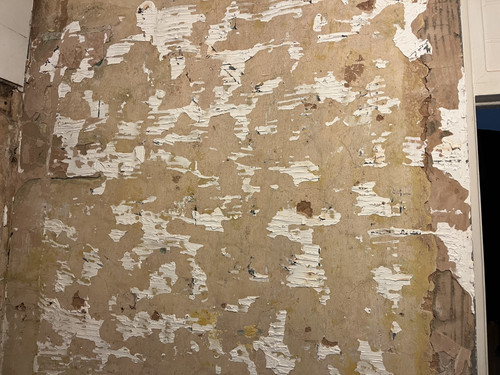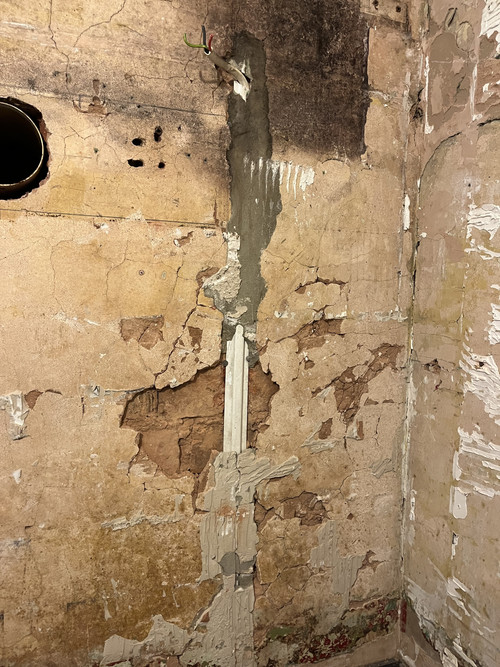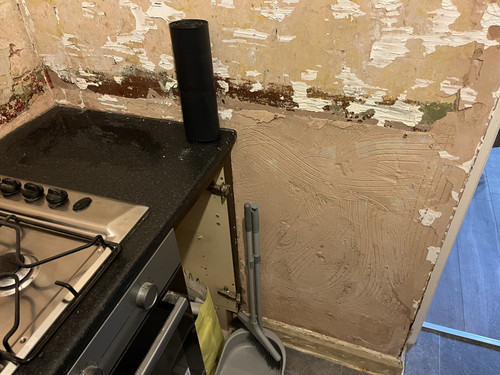Evening,
I’ve recently started to take my kitchen apart in a newly purchased house because it was terrible.
The space isn’t big, roughly 2.6m long x 1.7 width.
The whole kitchen was tiled, of which someone had kindly tiled the top layer over the old layer making two sets of tiles.
The plaster isn’t great though, it is crumbling, cracked and blown (mainly around the over area). Looking at what people would be doing to repair or replace this?
Me and my partner would be tackling it ourselves, after research our options come back to plastering it all again, taking it back to bare brick and putting insulated plasterboard up or batoning it out and putting insulated plasterboard up.
Just to highlight we have never done any plastering of any sort.
What would you all suggest?




I’ve recently started to take my kitchen apart in a newly purchased house because it was terrible.
The space isn’t big, roughly 2.6m long x 1.7 width.
The whole kitchen was tiled, of which someone had kindly tiled the top layer over the old layer making two sets of tiles.
The plaster isn’t great though, it is crumbling, cracked and blown (mainly around the over area). Looking at what people would be doing to repair or replace this?
Me and my partner would be tackling it ourselves, after research our options come back to plastering it all again, taking it back to bare brick and putting insulated plasterboard up or batoning it out and putting insulated plasterboard up.
Just to highlight we have never done any plastering of any sort.
What would you all suggest?











